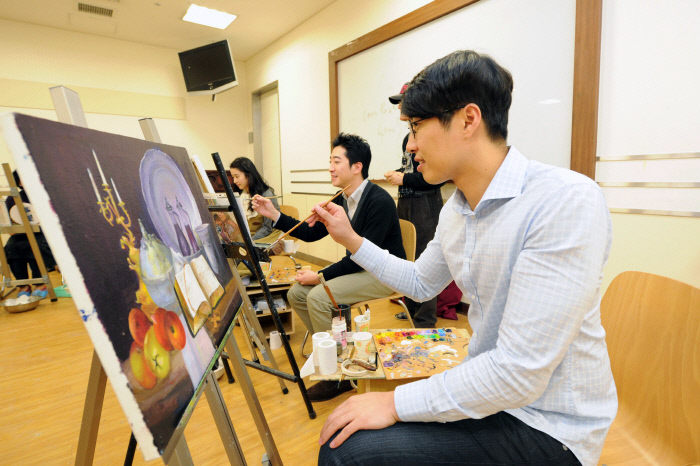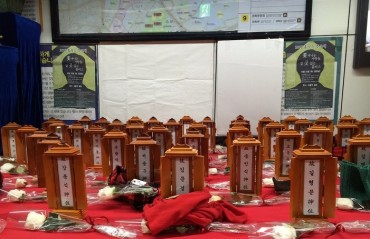
A growing number of workers are visiting private language schools and state-run centers teaching various classes after work. (image: Shinsegae Department Store)
SEOUL, Mar. 10 (Korea Bizwire) — South Korean workers’ spending on education and hobbies increased last year, due largely to the implementation of the government’s 52-hour workweek policy, government data showed Sunday
Total household spending on private education came to 42.24 trillion won (US$37.15 billion) last year, up 3.22 percent from a year earlier, according to findings by the Bank of Korea (BOK) and Statistics Korea.
The on-year increase on private education was the highest since the 3.2 percent on-year increase tallied in 2009, the data showed.
A growing number of workers are visiting private language schools and state-run centers teaching various classes after work, the BOK said. The classes can improve one’s overall knowledge of certain areas and non-work related activities.
“We think education spending by the people in their 20s and 30s has increased,” a BOK official said. “Noticeably, the spending increased starting in the third quarter, apparently affected by the 52-hour work system.”
In July, 2018, Asia’s fourth-largest economy implemented the shorter workweek rule amid efforts to stop chronic overwork and stimulate consumption and a greater work-life balance.
The policy went into effect for companies with more than 300 employees and will be gradually expanded to cover smaller firms. The rules will be expanded to businesses hiring between 50 and 300 people in January 2020 and include firms with more than five people in July 2021.
Total household spending on hobbies, such as entertainment, came to 67.23 trillion won last year, up 4.6 percent from a year earlier, the data showed. The on-year growth is the largest since logging a 5.8 percent annual gain in 2011.
Spending on sports products, including fishing rods and golf clubs, skyrocketed 12.3 percent on-year in 2018, the largest on-year growth since 2010.
“Spending on hobby-related activities and leisure increased due to more people being interested in fishing and yoga,” the official said.
Consumption of certain alcoholic beverages has also gained popularity, mainly as a result of more people opting to drink alone, the data showed.
Imports of wine jumped 11.5 percent on-year to 40,291 tons last year, with foreign beer numbers surging 17.1 percent vis-a-vis 2017, according to the latest data.
(Yonhap)






